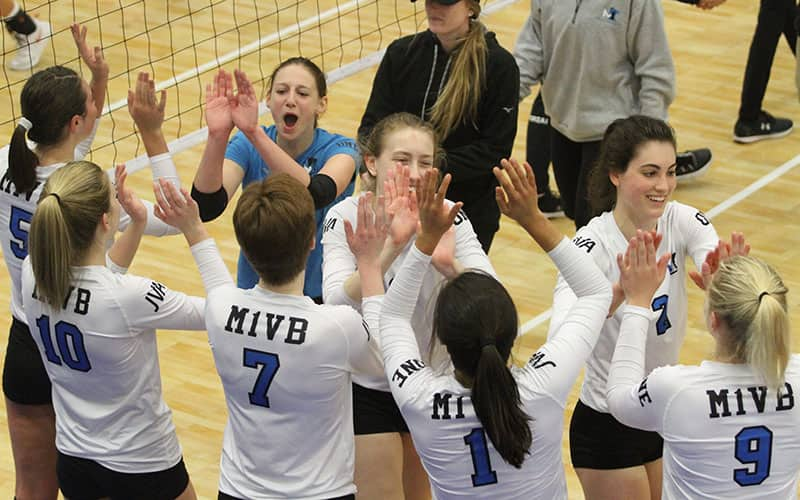
We learn any motor skill, be it a sport technique, video game or music instrument, by doing. Ideas can come by watching or reading, but to get our brain to acquire a skill, we must also DO it. That’s why all skill learners MUST practice. The best example is how young people learn to drive cars. My kids watched me drive for about 16 years, but until they started driving themselves, they didn’t have the skill to actually drive.
When you practice, you work on your technique. Far too much of athletes’ time is spent not working and doing, but standing in line or listening to a coach talk. We must encourage deeper, richer and more learning to happen in gyms. It comes down to how much we can get our athletes to perform the skill in a game-like way.
Consider this principle:
“If you only have one ball in the air above your court, you should simply be scrimmaging with some variation of scoring.”
A key part of this principle is that The Game Trains the Brain, and that if you can’t get more balls than one flying around that learning space, simply playing 6 vs. 6 and giving feedback is best.
I used to do a scored middle hitter vs. middle blocker drill where the rest of the team stood around and chased balls while I worked on that piece of the game. I still often focus on one part of the game, but now I do it with everyone reading and working to keep the ball flying. Then I use technology feedback (e.g. BAM video delay, Hudl) to instruct, or I pull players out to learn with me while the game goes on.
A wise coach noted they used to constantly break things down and teach every possible situation that can happen. Now, they teach the players to problem solve on their own. In time, the game teaches all these situations, and the lessons are better remembered. Let failure happen; give feedback where appropriate and stop correcting every error while helping your athletes learn smarter. Read a recent Scientific American article sums this up well.
Learning happens in game-like situations and occurs more quickly with more touches. Train in reality and get more repetitions with these tips:
- Get more nets up, even if not full sized, and use them since you must read the ball through/over them
- If you only have one net, split the court in half using swim noodles and create a safety zone between those courts
- Create stations around the single net so that 2-3 players break out and get a second ball flying. If a station doesn’t have a net, play 1 vs. 1 plus one with the middle player acting as the net. Keep track of the highest number of ball control repetitions in a cooperative way. Or, create them with a wall.
- Set up a ribbon/rope station in a corner with a mesh catching the spike and rolling it back for players to work on pass-dig/set/spiking reps
Given a choice between a drill or a game, 99% of players ask for the game (in part as that means the coach is not as involved). The most popular drills or games with players are universally Queen/King of the Court or Speedball, which gets 28% more touches than the former.
Why do players love these drills? It comes down to their desire and inner knowledge of learning factors.
- They start with the serve, just like every point in a match
- They go over the net rather than being a drill in front of a net
- The team size lets each player usually touch the ball when it comes over to their side vs. playing sixes where half the team watches
- They are scored and competitive, teaching the vital lesson that “winners stay on” and the only “punishment” is losers watch
- They teach problem-solving in creative, reality-based ways from off the net and over the net
- They're game-like and fun
Other sports modify their game structure to encourage more touches, too. National Hockey League teams love to play 2 vs. 2 with three pucks in play across the short side of the rink, and USA Basketball has been successful at getting six basketball hoops set up in gymnasiums.
Sticking with hoops, 3 vs. 3 basketball is debuting at the 2020 Olympics, and I expect to see the skills of those basketball players improve just as volleyball athletes would improve were they to play beach doubles for a summer.
Also, I helped a Major League Baseball team modify a catching drill to include 300% more active participation and participation in all facets of the drill – throwing, catching and even staffing a pitching machine – not just working at home plate. Several details were also made more game-like. The catchers interacted more with their coaches during the new drill, and they expressed how much better the learning was.
We have a lot to be thankful for during our holiday season (beyond my wife’s passion for the Hallmark Channel), and I am thankful to those who read this blog, critically think, share your own ideas and keep learning. Thank you for giving so much back to our sport.
